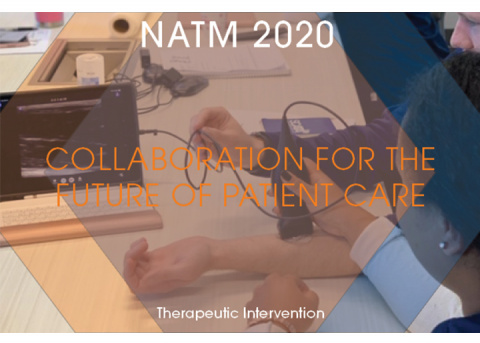
Editor's note: In honor of National Athletic Training Month, NATA is conducting a twice-weekly blog series throughout March that showcases how ATs use the five domains of athletic training to improve the health and well-being of their patients. This blog post highlights domain four, Therapeutic Intervention, and how members are embodying this year’s NATM theme, “ATs Impact Health Care Through Action.”
If there is one thing all athletic trainers strive for, it’s providing the highest standard of care to their patients. From the field where an injury happens to the emergency room and recovery, athletic trainers should have a good understanding of what happens at every stage of care and of every health care professional’s role to maximize that care for their patient.
At Charleston Southern University, that understanding happens before graduation during Interprofessional Education (IPE) Days, an annual two-day workshop for athletic training students to collaborate with nursing and physician assistant students in communication and practice scenarios.
CSU Athletic Training Program Director Brian Smith, DHSc, SCAT, ATC, encourages collaboration at IPE Days because he said it will ultimately increase his athletic training students’ abilities to work with other health care providers to create more cohesive outcomes for future patients.
“We’re all treating the same patient,” Smith said, explaining that by expanding students’ knowledge of the additional health care providers a patient sees, it makes the patient’s experience and transfer or care more seamless.
During the workshop, athletic training, nursing and physician assistant students go through introductions to their respective professions through interviews. They discuss their educational backgrounds, certification, licensure and their clinical settings. The students also participate in team communication activities centered on the Situation, Background, Assessment, Recommendation (SBAR) technique for transfer of patient care in an emergency situation, which is the communication used in hospital settings for transfer of care.
Smith said the keys takeaways for students are a better understanding of each profession’s transfer of care and emergency care procedures, and improving communication between professions, in addition to collaboration.
“IPE Days offer not only an opportunity to network and build the bridges that will support all careers involved for collaboration in years to come, but also serve as a wonderful opportunity for each budding professional to share the uniqueness of their discipline,” said Andrea Raines, nursing instructor at CSU.
The workshop concludes with the students rotating through emergency scenarios focused on specific topics, such as exertional sickling and acute asthmatic emergencies.
For Raines and for Smith, IPE Days allow students to realize their limitations, and find who to turn to when needed.
“When we all remained pigeon-holed in our own professional domain, we lose sight of the valuable training and experience of those professionals around us,” Raines said.
“It just makes for a more cohesive, better outcome for the patients when we’re working collaboratively instead of in competition with each other,” Smith said.
The athletic training, nursing and physician assistant curriculum at CSU overlap, and they overlap as health care professionals post-graduation as well, most often in emergency care.
“We are all under the supervision of physicians,” Smith said. “It is a natural collaboration between these types of practitioners.
“There is also a lot of crossover of what we’re taught in the classroom – from didactically between musculoskeletal between general medical.”
IPE Days provides students with the opportunity to familiarize themselves with the health care professionals they’re most likely to work with post-graduation. Doing so, Smith said, is what will maximize patient care in the future.
Continuing Education
Log into the NATA Professional Development Center and search for the following courses that relate to domain four, Therapeutic Intervention. You can also explore upcoming webinars to earn additional CEUs within the PDC.
- Effective Clinical Management of Patellofemoral Pain
- Evidence-based Management for Overhead Athletes with SLAP Lesions





